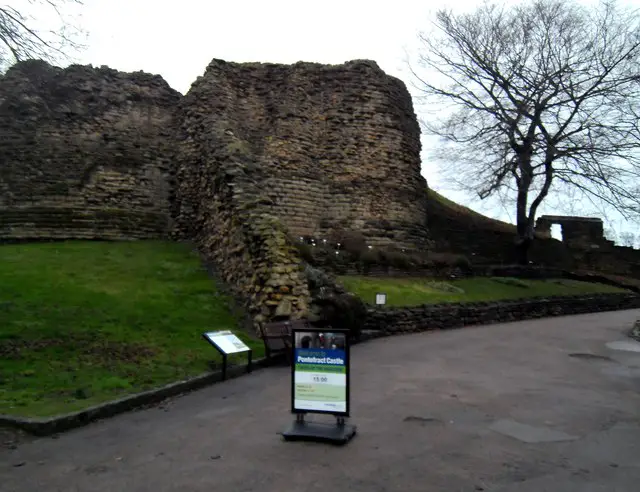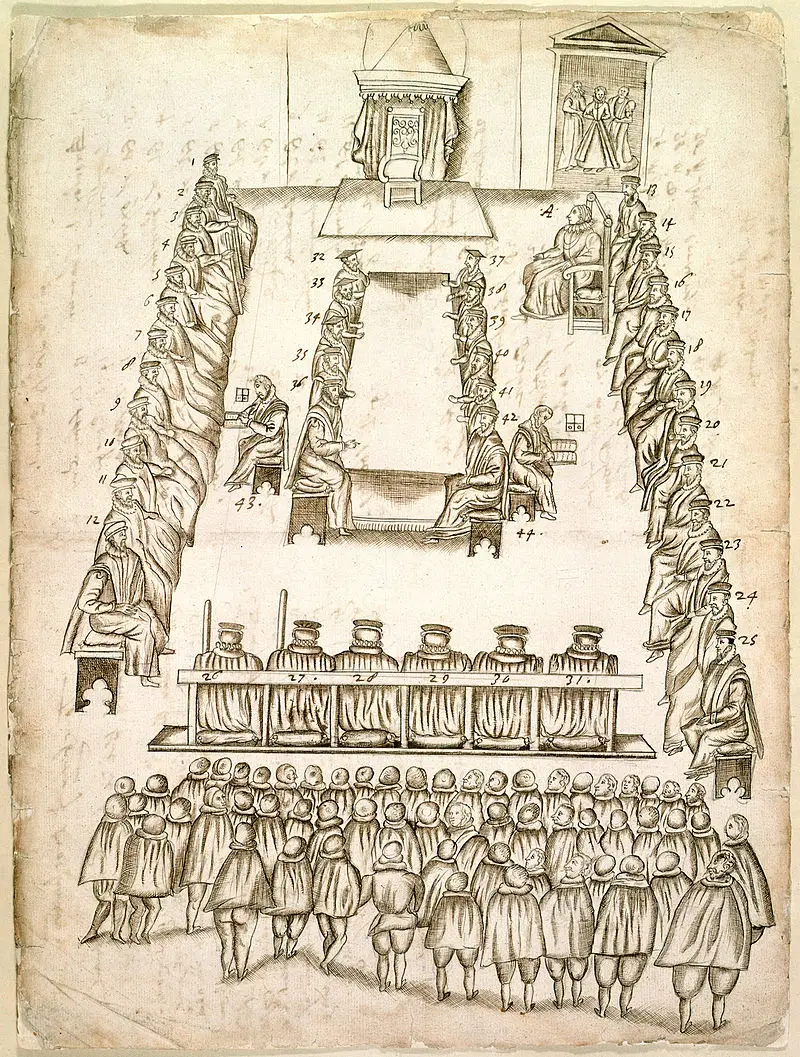 Today, author Sarah Bryson shares with us an article on Edward VI's christening.
Today, author Sarah Bryson shares with us an article on Edward VI's christening.
In early 1537, Queen Jane Seymour, Henry VIII's third wife, became pregnant. Henry ordered refurbished suites at Hampton Court Palace for his Queen and also a set of new suites for the longed-for son that he believed Jane would bring him. Astoundingly, Henry only gave his builders five months to add these huge rooms and additions to Hampton Court! Hundreds of men were hired for these magnificent additions and as well as being paid overtime Henry VIII also ordered candles so the men could work at night.
Jane Seymour had to spend the last month of her pregnancy shut away in her chambers at Hampton Court. Jane's chambers were designed to represent a womb and would have been hung with tapestries covering the walls and windows, with only one window left open to let in a little light and fresh air. There would have been carpets on the floor and a fire crackling to provide warmth. Jane's labour lasted for two days and three nights, until finally on 12th October she gave birth to a son. At the age of forty-seven, Henry VIII finally had a legitimate son and heir. In celebration of the birth of a Prince and heir a "Te Deum was sung in Paul's and other churches of the city, and great fires [were made] in every street, and goodly banquetting and triumphing cheer with shooting of guns all day and night, and messengers were sent to all the estates and cities of the realm, to whom were given great gifts."
Immediately, a grand christening was planned, every detail overseen by the King. On 15th October, a grand procession took place at Hampton Court taking the newborn Prince to the Chapel Royal where he would be christened. Henry VIII designed the procession to be the greatest that had ever taken place at Hampton Court. In addition to baby Edward, high-ranking members of the court and clergy were required to take their place, as well as foreign diplomats and ambassadors so that they could report back to their masters on what a superlative event the new prince's christening had been.
Letters and Papers records the magnificent procession of the young Prince to his Christening:
"The order of going to the christening was: First, certain gentlemen two and two bearing torches not lighted until the prince be Christened. Then the children and ministers of the King's chapel, with the dean, "not singing going outward." Gentlemen esquires and knights two and two. Chaplains of dignity two and two. Abbots and bishops. The King's councillors. Lords two and two. The comptroller and treasurer of the Household. The ambassadors. The three lords chamberlains and the lord Chamberlain of England in the midst. The lord Cromwell, being lord Privy Seal, and the lord Chancellor. The duke of Norfolk and abp. of Canterbury. A pair of covered basins borne by the earl of Sussex, supported by the lord Montague. A "taper of virgin wax borne by the earl of Wiltshire in a towel about his neck." A salt of gold similarly borne by the earl of Essex. "Then the crysome richly garnished borne by the lady Elizabeth, the King's daughter: the same lady for her tender age was borne by the viscount Beauchamp with the assistance of the lord." Then the Prince borne under the canopy by the lady marquis of Exeter, assisted by the duke of Suffolk and the marquis her husband. The lady mistress went between the prince and the supporter. The train of the Prince's robe borne by the earl of Arundel and sustained by the lord William Howard." "The nurse to go equally with the supporter of the train, and with her the midwife." The canopy over the Prince borne by Sir Edw. Nevyll, Sir John Wallop, Ric. Long, Thomas Semere, Henry Knyvet, and Mr. Ratclif, of the Privy Chamber. The "tortayes" of virgin wax borne about the canopy by Sir Humph. Foster, Robt. Turwytt, George Harper, and Ric. Sowthwell. Next after the canopy my lady Mary, being lady godmother, her train borne by lady Kingston. All the other ladies of honour in their degrees."
Edward's Christening would go down in the record books as one of the most prestigious and magnificent events that took place at Hampton Court. Within the Chapel Royal, the spectacular christening font was raised up on a huge structure which took up almost all of the chapel. The font was designed as such so that everyone in attendance could view the new prince. Archbishop Thomas Cranmer preformed the christening and afterward the Garter King of Arms proclaimed the new prince’s titles: Prince Edward, Duke of Cornwall and Earl of Chester. The Te Deum was then sung, and spice, hippocras, bread and sweet wine were served before little Prince Edward was returned to his mother's chambers in an equally impressive progression.
Charles Brandon, Duke of Suffolk; Thomas Howard, Duke of Norfolk; and Archbishop Cranmer stood as godfathers, while Mary, Edward's older half-sister, stood as godmother.
Tragically, Jane Seymour died just twelve days after the birth of her son, of what was most likely puerperal fever, an infection of the v*ginal passage or womb. The Queen's body was taken on a similar procession through Hampton Court to the Chapel Royal where she lay in state for two weeks before she was taken to St George's Chapel, Windsor Castle, for burial.
Sarah Bryson is the author of Mary Boleyn: In a Nutshell. She is a researcher, writer and educator who has a Bachelor of Early Childhood Education with Honours and currently works with children with disabilities. Sarah is passionate about Tudor history and has a deep interest in Mary Boleyn, Anne Boleyn, the reign of Henry VIII and the people of his court. Visiting England in 2009 furthered her passion and when she returned home she started a website, queentohistory.com, and Facebook page about Tudor history. Sarah lives in Australia, enjoys reading, writing, Tudor costume enactment and wishes to return to England one day. She is currently working on a biography of Charles Brandon, Duke of Suffolk.
https://youtu.be/jjoLrOH6xDQ
Sources
- Britain's Tudor Treasure: A Night at Hampton Court, 2015, BBC documentary presented by Dr Lucy Worsley and Dr David Starkey. Click here to view the documentary in our videos category.
- 'Henry VIII: October 1537, 11-15.' Letters and Papers, Foreign and Domestic, Henry VIII, Volume 12 Part 2, June-December 1537, ed. James Gairdner. London: Her Majesty's Stationery Office, 1891. 309-324. British History Online. Web. 23 September 2015. http://www.british-history.ac.uk/letters-papers-hen8/vol12/no2/pp309-324.
- Licence, Amy (2012) In Bed with the Tudors: The sex lives of a dynasty from Elizabeth of York to Elizabeth I, Amberley Publishing, Gloucestershire.



What an event that must have been. It is amazing a newborn with so much exposure could survive so much pomp and circumstance (and many didn’t). Poor Jane, two days and three nights of labor, how awful.
What a great celebration, not only the birth of Edward VI, but the 500th anniversary of Hampton Court. I could almost imagine myself being in the midst of the procession as one of the ladies. This BBC video was very beautifully made and really gave me a sense of how much pageantry went on I Henry VIII’s court on a daily basis. When my husband and I visited England a long time ago, our tour did not take us to Hampton Court. I would have liked very much to have seen it. But, seeing the video has made up for not being able to visit the palace. Thank you for downloading it.